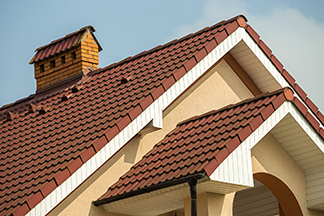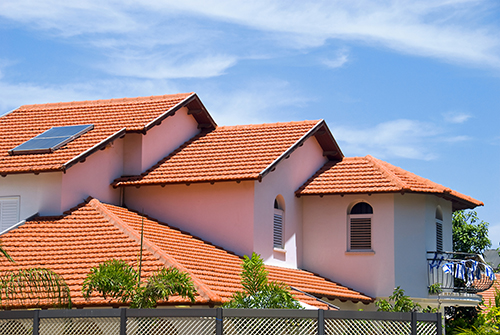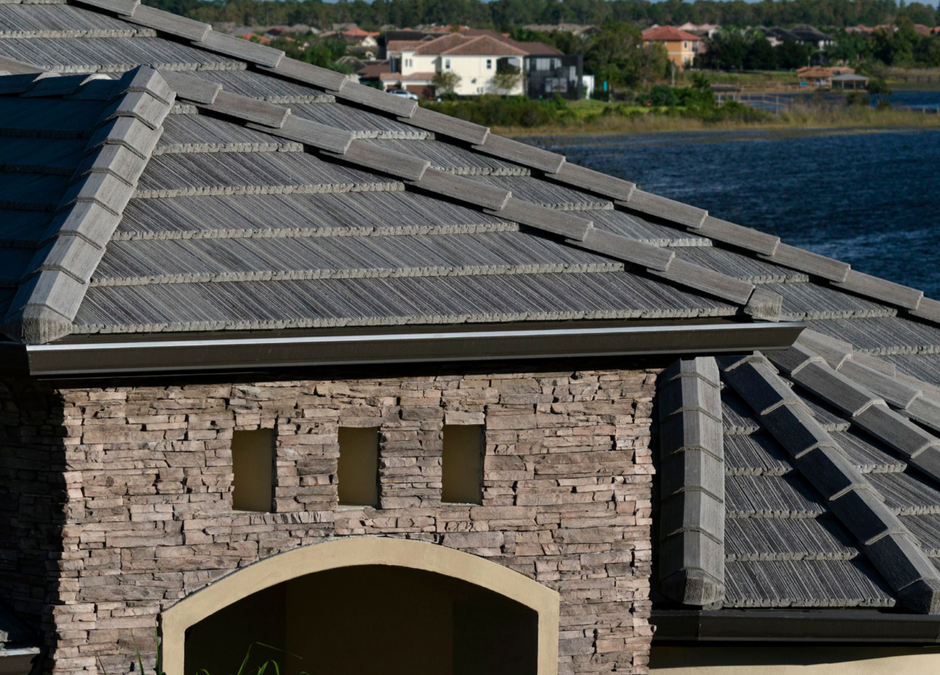Why is Tile Roofing the Best Roofing Material for Florida?

Tile roofing offers the strength to stand up to hurricane-force winds, making it the best roofing material for Florida homes which take a battering most hurricane seasons. But the benefits of tile roofing don’t stop with its durability to the elements.
Tile roofing material is installed with energy-efficiency in mind. A tile roof creates an air current drawing in cool air and driving hot air up and out of the ridge of your roof. This makes it a go-to roof for Florida homeowners looking to combat the harsh summer weather.
These roofs are known for their long lifespans and low maintenance. Plus, tile roofing is rot-resistant and can be recycled. This makes it not only durable and low maintenance but also an environmentally-friendly roofing option.
The Benefits of Concrete and Clay Tile in Florida
In short, tile roofing offers the following benefits to Florida homeowners:
- Durability
- Rot-resistance
- Pest-resistance
- Energy-efficiency
- Long lifespan
- Recyclable
- Variety of styles
What to Consider When Selecting a Roof for Warm Weather

Warm weather comes with its own set of concerns when it comes to roofing maintenance. The Florida climate, in particular, introduces extreme heat, humidity, and storms. This can do serious damage to roofing material not equipped to handle these conditions.
Durability
You’ll want roofs that are algae-resistant and durable against intense summer sun and storms.
Durability goes hand-in-hand with less maintenance and longer lifespans. For example, shingles tend to require more maintenance and have a higher likelihood of damage during hurricanes than tile roofing. Tiles roofs require the bare minimum of maintenance and are able to stand up to intense hurricane-force winds.
Energy-Efficiency
To combat the Florida heat, select a roof that is lighter in color and made from a material known for handling heat well. Darker roof colors tend to absorb heat and can cause the roofing material to deteriorate quicker.
Besides durability and energy-efficiency, consider the following when picking the best roofing material for your home:
- Style
- Color
- Budget
- Weight of material
READY TO REROOF YOUR HOME?
When to ReRoof in Florida

If you’re looking at the best time to fit a reroofing project into your schedule, the spring and winter months may be particularly optimal. These months are generally hurricane and thunderstorm storm-free.
Once you pin down a date for when you’ll be replacing your roof you need to decide what you’ll be replacing it with. If you’re in a warm climate consider concrete or clay tile for your roof. If you don’t opt for tile roofing, consider shingles as the second-best option.
Roofing Maintenance in Warm Climates (Like Florida)
You’ve determined the best roofing material for your Florida home. Now what? Maintenance is an unfortunate part of any roof, no matter your location. But homeowners in warm climates have additional considerations to keep in mind.
Follow these tips for ensuring your roof is well maintained and requires minimal repairs:
- Have an inspection done on your roof by a professional roofing contractor after storms or hail
- Have your roof cleaned every three to five years
- Trim trees to prevent branches from damaging your roof during storms


 “Francisco is an amazing contractor and his company and crews are just as good. Had to opportunity to experience his work at home in Windermere and the office building in Altamonte Springs. Both flooring and tile work were fantastic. Helped with selection and got job done quickly.”
“Francisco is an amazing contractor and his company and crews are just as good. Had to opportunity to experience his work at home in Windermere and the office building in Altamonte Springs. Both flooring and tile work were fantastic. Helped with selection and got job done quickly.”